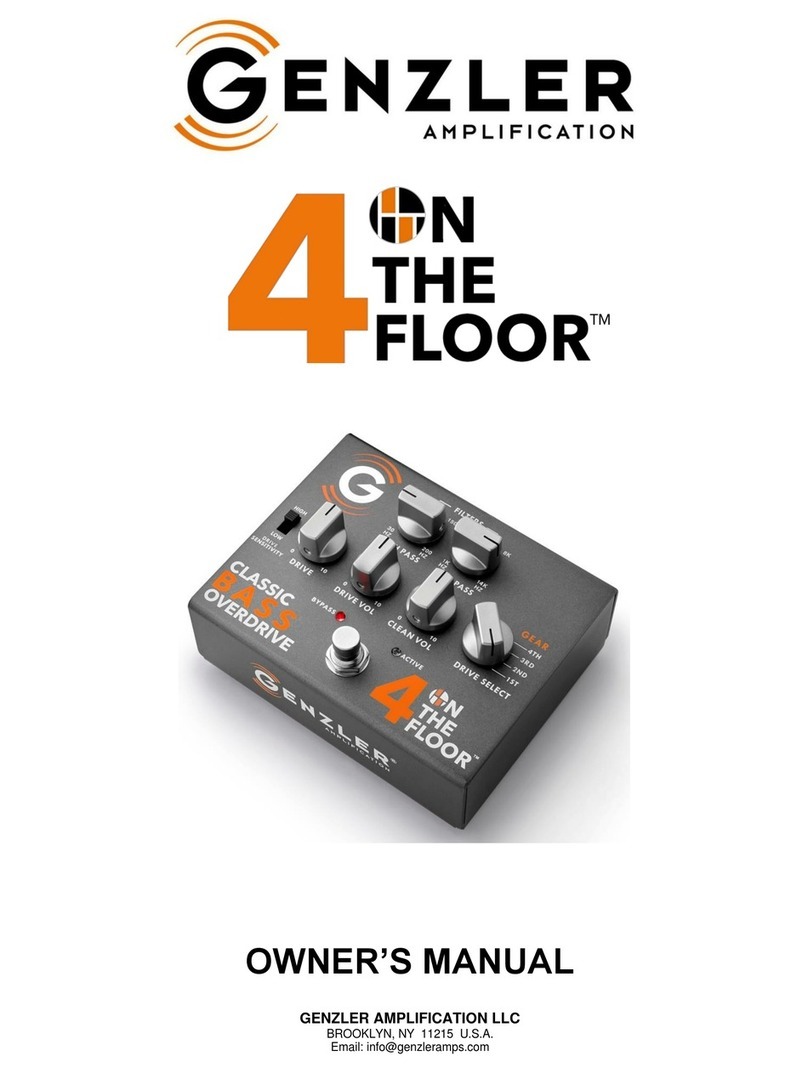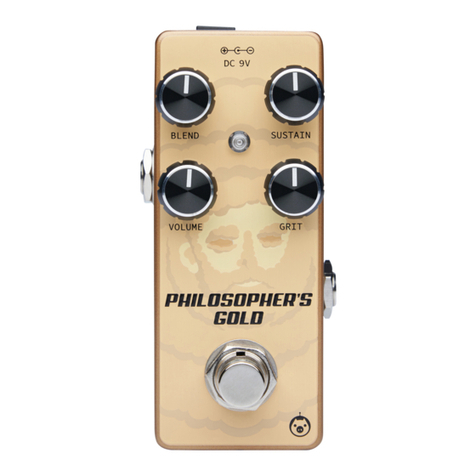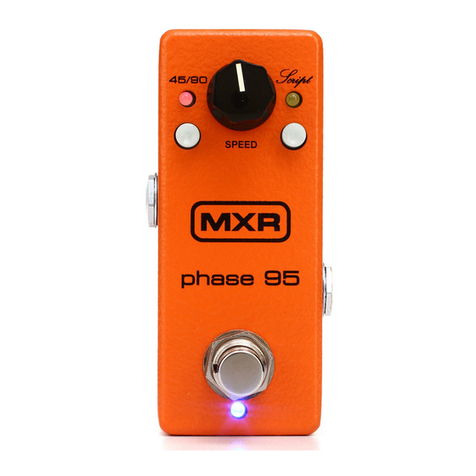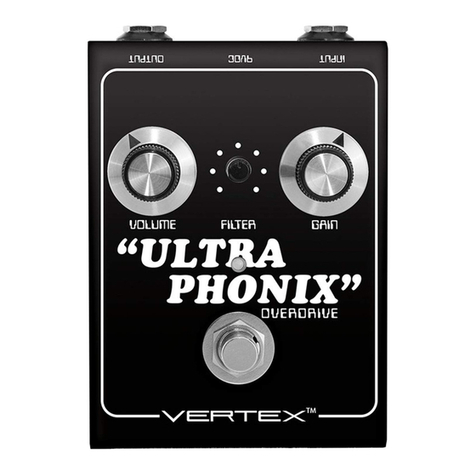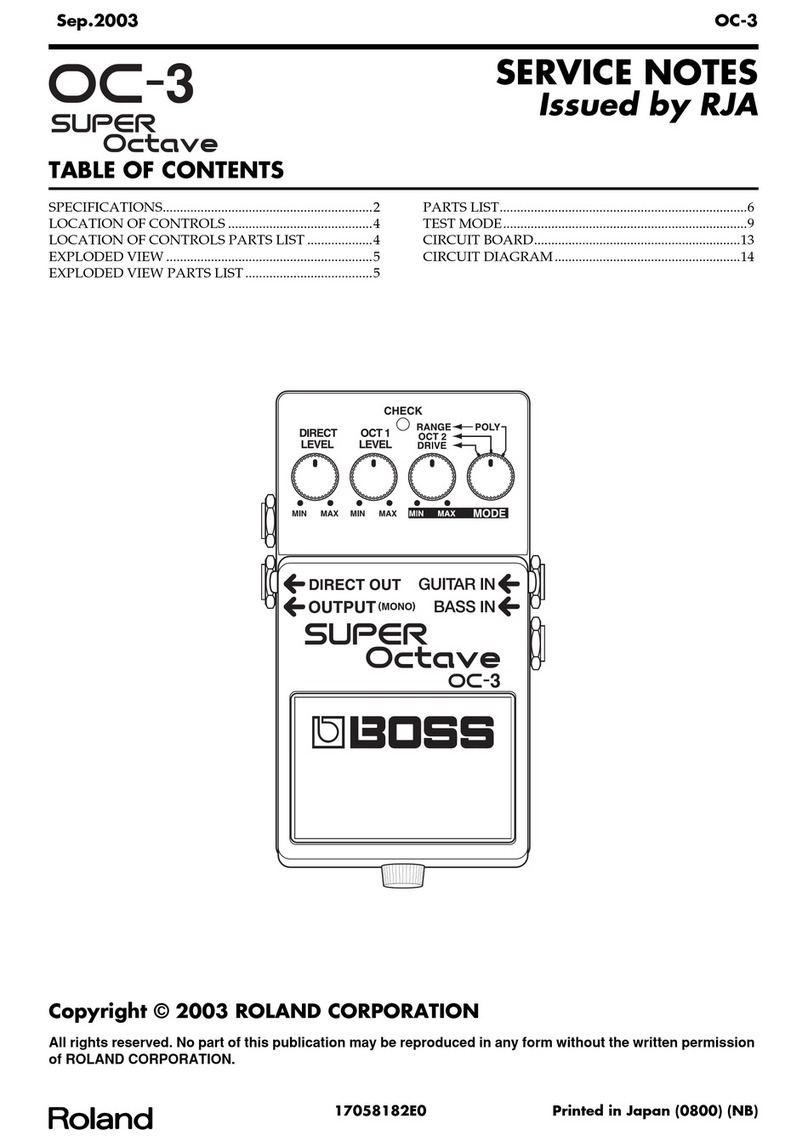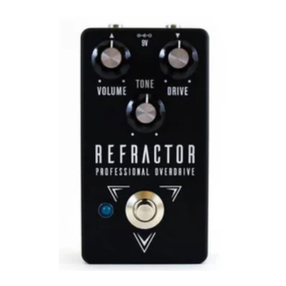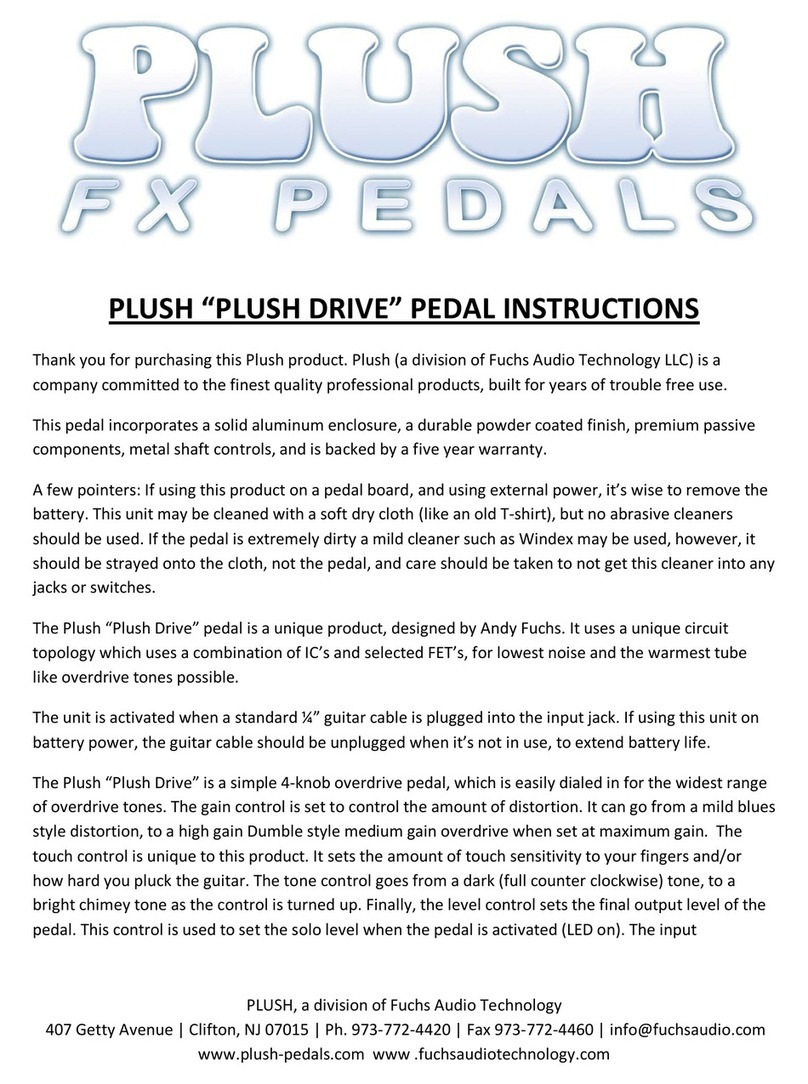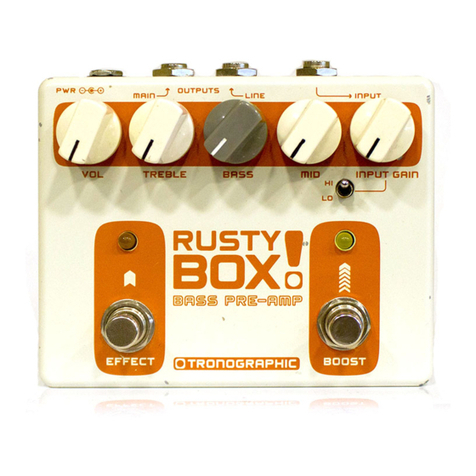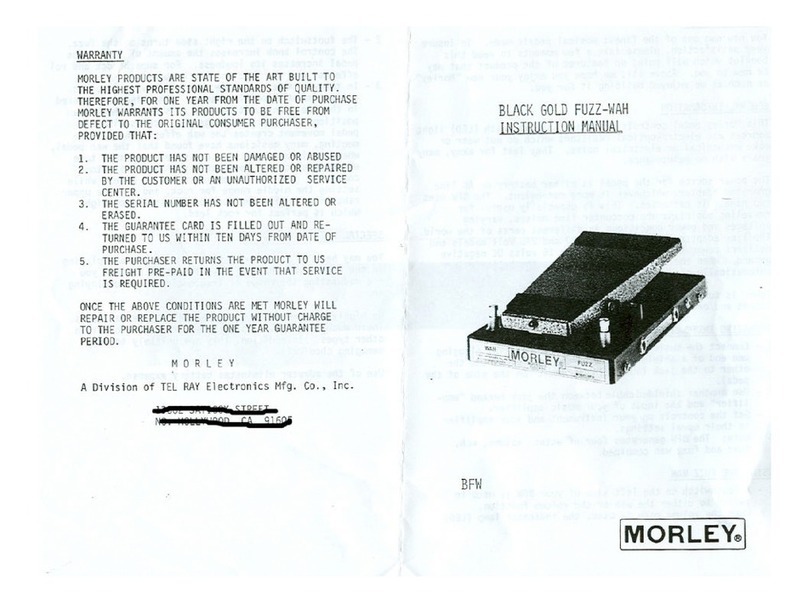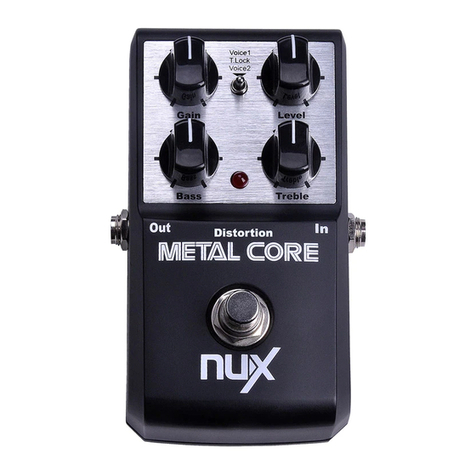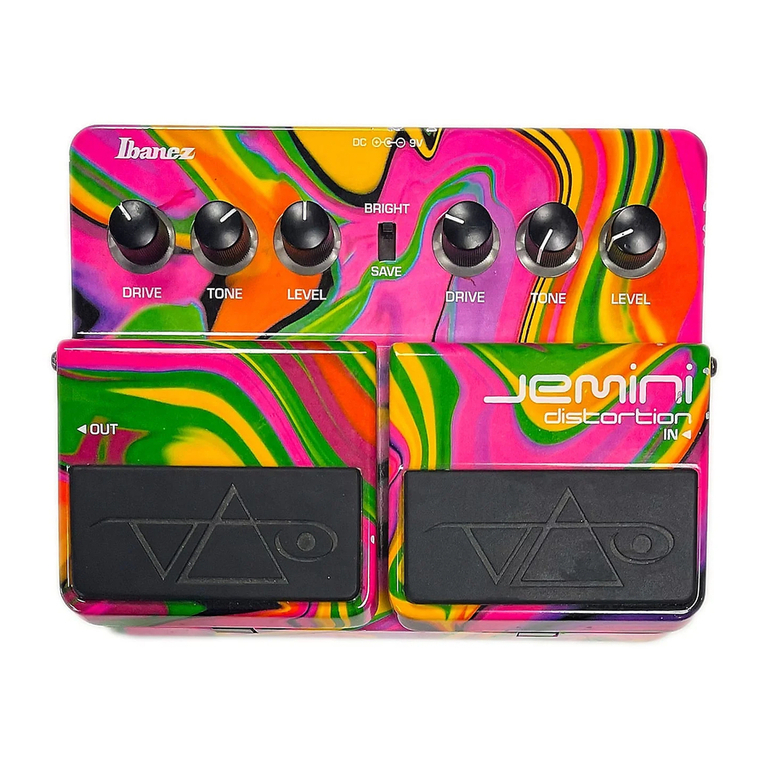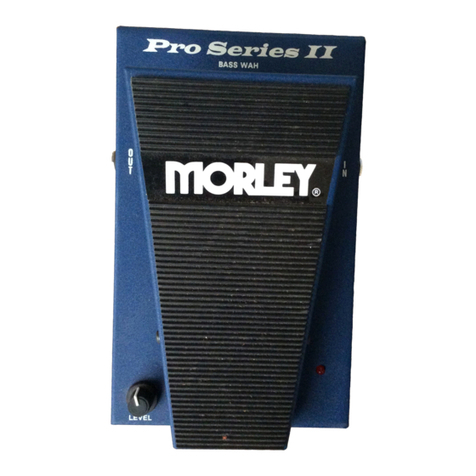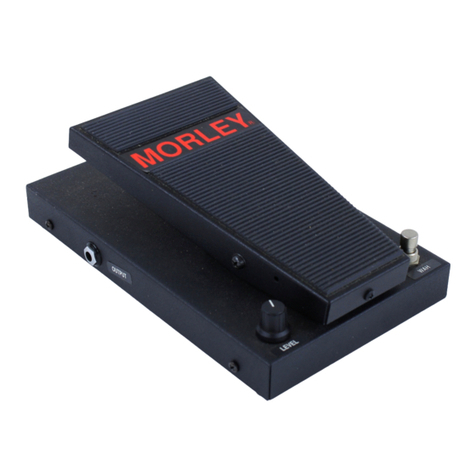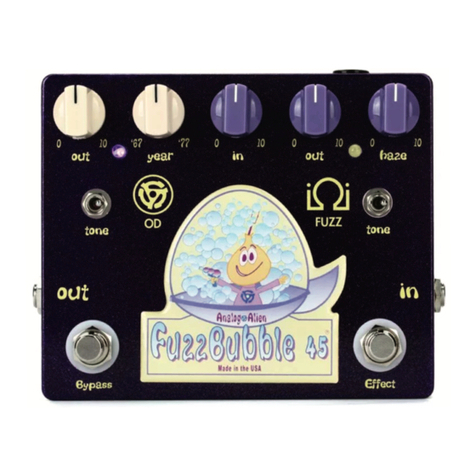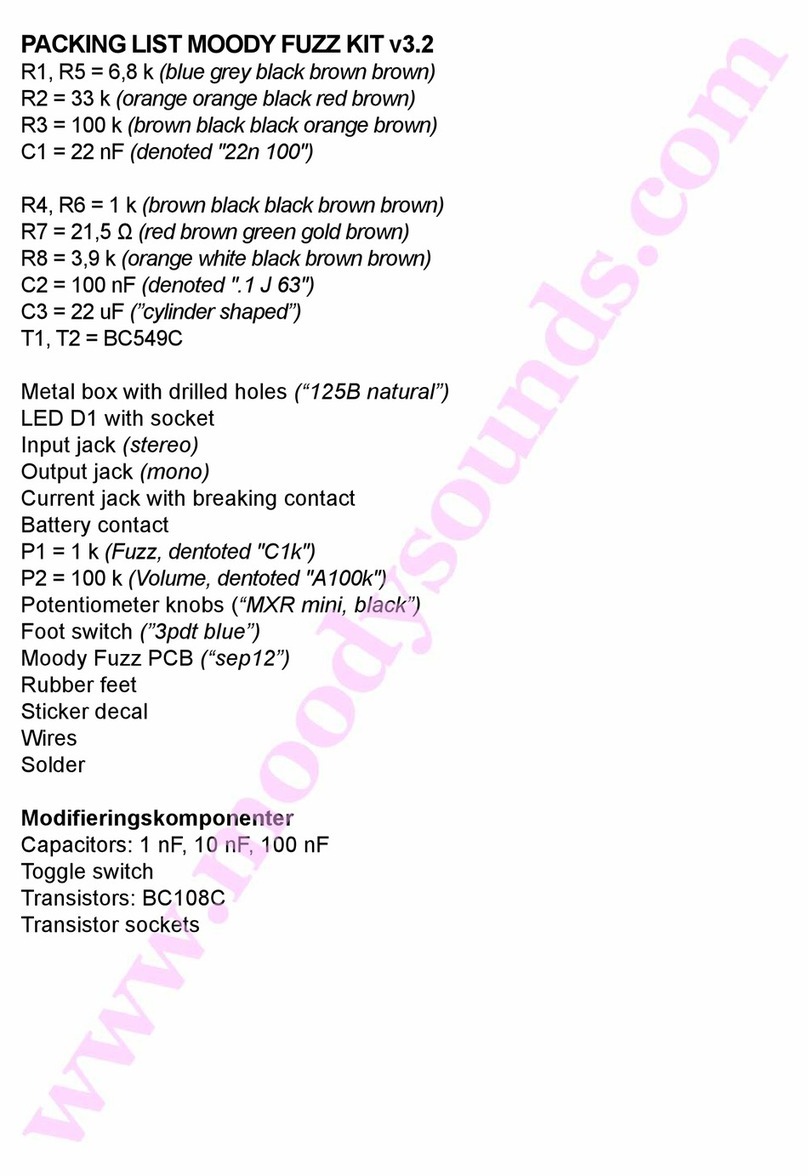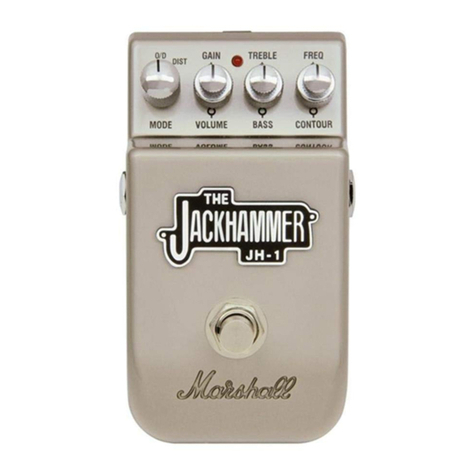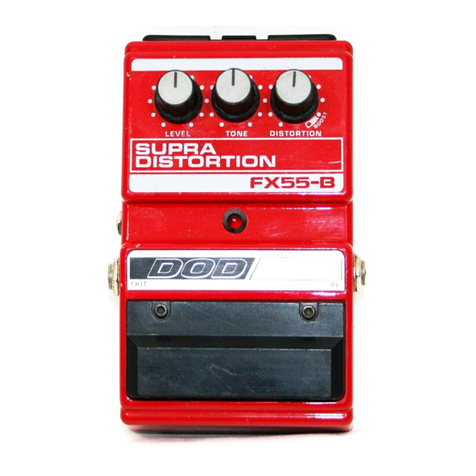GENZLER CRASH BOX 4 User manual

OWNER’S MANUAL
GENZLER AMPLIFICATION LLC
BROOKLYN, NY 11215 U.S.A.
Email: info@genzleramps.com

PRODUCT DESCRIPTION –The CRASH BOX-4™ “classic bass overdrive” is an ALL ANALOG distortion pedal that dynamically emulates 4 different distortion
types found in popular tube and solid state distortion circuit topologies and then gives the player additional control over drive/gain, distortion path (only)--high pass
and low pass filters and separately a clean blend. The result is the ability to tailor and fine tune the distortion to fit a wide spectrum of music and playing techniques,
without the loss of touch sensitivity, musicality, or the addition of excess noise.
DRIVE SENSITIVITY SWITCH - High sensitivity is the normal mode and is suitable for most basses and playing styles. The low sensitivity position gives a greater
range of control for hot bass preamps and aggressive playing styles. Additional distortion textures can be achieved with the switch in the low position and the DRIVE
control turned up higher. This switch does not impact the CLEAN VOL signal path.
FOOTSWITCH - Pressing the footswitch alternates the pedal’s operation between BYPASS mode (RED LED) and ACTIVE mode (BLUE LED). No controls on the
pedal function in bypass mode.
DRIVE –This control adjusts the drive to the analog distortion engine, the higher the control the greater the distortion. This control works best in the 10:00 to 4:00
positions. Set beyond 3:00, the distortion engine gradually rolls off high frequencies for a more natural, warmer, real world tone.
DRIVE VOLUME –This control adjusts the level of the distorted signal path present at the output of the pedal. Most players find this control works best in the 9:00 to
3:00 positions.
CLEAN VOLUME –This control adjusts the level of the clean signal path present at the output of the pedal. Most players find this control works best in the 9:00 to
2:00 positions. This control is also usable as a CLEAN BOOST only option, or with some blend of the distortion controls too.
DRIVE SELECT (GEAR) –The CRASH BOX-4 takes up where our 4 ON THE FLOOR overdrive pedal leaves off. While the 4-OTF compares to the smooth,
effortless shifting of a syncro-mesh transmission, the Crash Box 4 is reminiscent of the rough shifting, gear grinding, non-syncro straight-cut gear boxes in vintage off-
road vehicles and heavy trucks –often called “heavy metal” vehicles.
1st GEAR: Reminiscent of a tube amp’s moderately driven channel (including natural harmonics) with a bit of compression when driven hard. Many players will find
that this works well as a milder, smoother overdrive/distortion with plenty of even ordered harmonic richness and dimensional texture.
2nd GEAR: Emulates a tube amp’s more heavily overdriven tone, with more odd order harmonics and compression. While moderately compressed, there is still
plenty of depth of tone, dynamics and feel present.
3rd GEAR: An aggressive up-shift from 2nd gear, this heavier and edgier distortion is higher in odd order harmonics as well as having greater compression for a
tighter feel. The harder you dig in, the thicker the harmonics and texture, and the more compressed the feel, with greater sustain.
4th GEAR: This is the most aggressive gear of all -- a heavy, symmetrical, mostly odd order harmonics style distortion. While there are a lot of harmonics and
compression present, this gear does not give up tone but adds additional crush and increased sustain. NOTE: Because of the heavier compression in gears 3 and 4,
it’s normal for the volume to appear a little lower as the compression increases. Simply turn up the DRIVE VOLUME control a little to compensate.
HIGH PASS (LOW CUT) FILTER - This control is a variable frequency low cutoff of the signal into the distortion engine. Increasing the frequency of this roll-off,
reduces the low frequency energy and helps retain the articulation and note definition with higher distortion settings. This filter does not affect the clean path.
LOW PASS (HIGH CUT) FILTER - This control is a variable frequency high cutoff of the signal out of the distortion engine. Reducing the frequency of this roll-off
reduces the high frequency energy in the driven signal and can mellow out the tone of the distortion. This filter does not affect the clean path.

INPUT –Pedal Input, nominally instrument level but can accept line level with the sensitivity switch set low. Use a standard instrument/patch cable with TS plug.
POWER JACK - This pedal contains circuitry that auto-detects both the voltage and polarity of the attached power supply. The pedal will function properly from 9V to
18V, center positive or center negative polarity. With very high output basses, you may notice more input headroom and dynamics character with 12V or higher
power supplies. Be sure to use a low noise pedal type power supply, general purpose power supplies can introduce noise into the signal path.
OUTPUT –Pedal output, nominally instrument level but can output up to line level with the DRIVE/ CLEAN volumes turned up. Use a standard instrument/patch
cable with TS plug.
THEORY –Understanding the principles behind this pedal will allow you to unlock a wide range of distortion tones, textures and dynamics. These distortion types are
based upon how iconic tube and solid state analog circuits behave when overdriven. The high pass/low pass filters and drive/clean blend enable you to create and
fine tune a broad range of outputs to fit your style.
While the clean signal path is affected by the clean volume control only, the distortion signal path begins with the HIGH PASS FILTER (HPF). When the HPF is in the
fully counterclockwise position the incoming signal is unaffected (i.e., it remains full range). Rotating this control clockwise reduces the amount of low frequency
content in the signal prior to the signal entering the distortion engine. Reducing low frequency content can help clarify and tighten the distortion products and reduce
muddiness as the signal is overdriven. The unique aspect of this design is that you can reduce low frequency areas that are often problematic when creating
overdrive and distortion effects while still getting the original signal’s low end in your final output by blending in the original clean signal with its full range content.
After the HPF the signal enters the distortion engine (which generates the distortion harmonics), the type of distortion is based on the DRIVE SELECT and
SENSITIVITY switches (as described earlier in this manual). Different GEARS work better for different players, playing techniques, music styles and tastes. Some of
the effect is tonal, some textural and some feel. The lower gears have more subtle textural and feel, the higher gears have a more aggressive, compressed tonal feel
and impact.
After the distortion engine, the signal enters the LOW PASS FILTER (LPF). When the LPF control fully clockwise its response is full range (no roll-off). Rotating this
control counter-clockwise progressively rolls-off the high frequencies of the upper distortion harmonics earlier, resulting in a smoother, mellower, less edgy distortion
tone. Typically, the heavier the distortion, the more counterclockwise you will want to set this control. The graphic above the control shows the filter’s action on the
signal.
Finally, the DRIVE VOLUME and CLEAN VOLUME controls combine to form the “DRIVE-CLEAN” blend section. The levels of the two signal paths are completely
independent for a couple of important reasons:
1. The DRIVE VOLUME and CLEAN VOLUME can be set at whatever level is necessary to achieve the desired results. Some players might choose to use
additional level from either or both controls as a SOLO BOOST (with or without distortion).
2. When using the CLEAN VOLUME alone, the pedal can function as a CLEAN BOOST ONLY (with the DRIVE VOLUME all the way down). This way, the
pedal can be used to overdrive the front end of an amp (if desired).
In general, the distortion character and level will be set to meet your needs, then adding some clean signal can help improve the dynamics, low frequency expansion
and top end sparkle that may be missing from the distortion only signal path. Switching between BYPASS and ACTIVE and adjusting the DRIVE and CLEAN
volumes can be used to balance the two modes, or add boost as needed.
SPECIFICATIONS:
Dimensions: 5” (127mm) W x 4.1” (104mm) D x 2.3” (59mm) H (w/ knobs and feet)
Weight: 1.1 lb (0.5kg)
Power Supply: 9VDC-18VDC (low noise type), either polarity (auto-detecting), 40mA max
Input Impedance: >1M ohm
Output Impedance: 1k ohm
Distortion Engine Input HPF Range: 30Hz –200hz
Distortion Engine Output LPF Range: 1kHz –14kHz
Input Sensitivity (nominal): -20dBu (high sensitivity), -10dBu (low sensitivity)
Maximum Input Level: 0dBu (9V supply), +5dBu (12V supply), +10dBu (18V supply), high sensitivity, DRIVE at 9:00
Maximum Input Level: +5dBu (9V supply), +12dBu (12V supply), +18dBu (18V supply), low sensitivity, DRIVE at 9:00
Maximum Output Level: +9dBu (9V supply) +14dBu (12V supply), +20dBu (18V supply)
Maximum Output Level: +9dBu (9V supply) +14dBu (12V supply), +20dBu (18V supply)
[form: CBX4-OM-WEB-REV1]
Table of contents
Other GENZLER Music Pedal manuals
